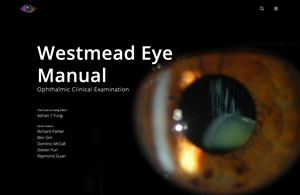13 Rhegmatogenous Retinal Detachment Special Scenarios
13.1 Rhegmatogenous Retinal Detachment: Re-detachment Surgery
13.2 Macular Hole Retinal Detachment
13.3 Retinoschisis Retinal Detachment
13.4 Optic Disc Pit Retinal Detachment and Maculopathy
13.5 Giant Retinal Tear Detachment
13.6 Retinal Dialysis
13.7 Macular Folds
13.8 Sickle Cell Detachment
13.9 Viral Retinitis Associated Retinal Detachment
13.10 Paediatric Retinal Detachment
13.11 Coloboma Associated Retinal Detachment
13.12 Inherited Retinal Dystrophies and Retinal Detachment
13.4 Optic Disc Pit Retinal Detachment and Maculopathy
Management of optic disc pit retinal detachment is controversial. There is often a combination of sub-retinal and intra-retinal fluid (the latter often incorrectly being termed retinoschisis[1]). Debate remains as to whether the fluid originates from the subarachnoid space (cerebrospinal fluid) around the optic nerve, or from the vitreous cavity (Figure 13.4.1).[2] Regardless, the management is likely to be the same. While there is a 25% chance of spontaneous resolution, long standing (longer than 3 months) neuro-sensory detachment of the fovea generally results in poor visual outcomes (Figure 13.4.2).[3] Non-surgical approaches include: laser demarcation of the optic pit at the temporal margin of the optic nerve and intravitreal gas injection. A surgical approach should be considered in cases where neurosensory detachment is affecting or threatening the fovea, as well as progressive and symptomatic cases. Due to the rare nature of this entity the evidence in the literature is based on small scale series alone. Surgical interventions that have been described include:
Imamura Y, Zweifel SA, Fujiwara T, Freund KB, Spaide RF. High-resolution optical coherence tomography findings in optic pit maculopathy. Retina. 2010 Jul-Aug;30(7):1104-12. Accessed July 28, 2019.
Georgalas I, Ladas I, Georgopoulos G, Petrou P. Optic disc pit: A review. Graefe’s Arch Clin Exp Ophthalmol. 2011. doi:10.1007/s00417-011-1698-5
Yuen CHW, Kaye SB. Spontaneous resolution of serous maculopathy associated with optic disc pit in a child: A case report. J AAPOS. 2002. doi:10.1067/mpa.2002.127921
- Maximal relief of vitro-retinal traction: Pars plana vitrectomy and induction of posterior vitreous detachment (PVD), removal of any glial tissue or vitreous plugging the optic disc pit and peeling of any epiretinal membrane and internal limiting membrane around the optic nerve.[3] Since these patients can be young to middle-aged, one can expect strong vitreo-retinal adhesion.
- Inner retinal fenestration: After core vitrectomy (with or without PVD induction), a bent 25-gauge needle is used to make a partial retinal thickness retinotomy just temporal to the optic disc pit.[4] The aim is to allow a conduit for fluid to exit from underneath and within the retina to the vitreous cavity, regardless of the source of the fluid (Figure 13.4.3).
- Macular buckle[5]
All rights reserved. No part of this publication which includes all images and diagrams may be reproduced, distributed, or transmitted in any form or by any means, including photocopying, recording, or other electronic or mechanical methods, without the prior written permission of the authors, except in the case of brief quotations embodied in critical reviews and certain other noncommercial uses permitted by copyright law.
Westmead Eye Manual
This invaluable open-source textbook for eye care professionals summarises the steps ophthalmologists need to perform when examining a patient.

